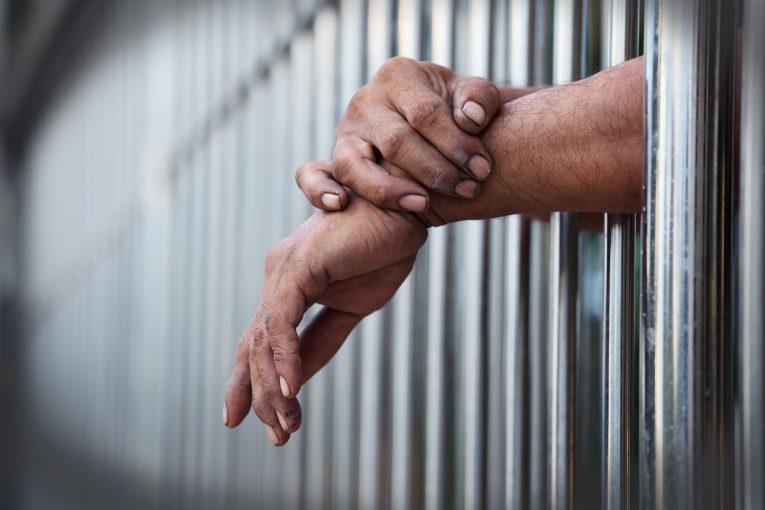
 By Alana Bleimann
By Alana Bleimann
SAN FRANCISCO – When San Francisco’s District Attorney, Chesa Boudin, ran for office in November 2019, he focused his campaign on ending mass incarceration with restorative justice models, rather than punitive incarceral methods.
Various social media accounts have called into question the validity of his progressive models after former San Francisco parolee Troy McAlister allegedly hit two women with his car on New Year’s Eve.
For accounts like @TruthAboutChesa who believe the DA should be held accountable and should throw a murder suspect in prison, Boudin’s office poses a counter method that would hold that specific individual accountable to the city at large.
Titled “restorative justice,” it repairs criminal harm directly to the victim(s), victim’s families, and/or the city at large. In this case, it is the goal of Boudin to restore harmony to the families of the victims, Hanako Abe and Elizabeth Platt.
In an article by KQED, Chesa Boudin stated, “[B]ut what we’re focused on is three things going forward. First of all, supporting the families through the grief. Second of all, holding Mr. McAlister, the man we believe caused this harm, accountable for what he did.
“And third, bringing together all the different law enforcement agencies who were involved in supervising or policing or holding Mr. McAlister accountable and looking at what we did, what we  could have done, what we should have done in ensuring that going forward, we don’t have agencies operating in silos, but that we have better communication.”
could have done, what we should have done in ensuring that going forward, we don’t have agencies operating in silos, but that we have better communication.”
The harm has been done and cannot be reversed, and working closely with the victim’s families is one of the best ways to restore strength back to the city, the DA said, adding when someone commits a crime, they are doing more than simply breaking the law—they are causing emotional pain to families, communities, and cities at large.
It is no myth that San Francisco has been affected by the emotional impact of crime, which is precisely why Boudin’s efforts are so centered around restorative justice—he knows the positive impact it can make for a historically crime-ridden city like San Francisco.
The DA knows incarceration fails to address the root causes of crime through punitive measures, and punishment and accountability are not the same.
The U.S. is known to punish people at an extraordinary high rate but those same people often return to prison after re-offending, and two-thirds of offenders become repeat offenders within three years of their release, according to Boudin in comments at a virtual town hall meeting Tuesday
Throwing an alleged murderer, who is only a suspect, right into prison for life does not deter others from committing the same crime nor does it teach the offender why what they’ve done is wrong. And, most importantly, it does not work to emotionally heal the victim(s), whether that’s one individual or a whole city, Boudin said.
San Francisco has begun to heal from crime since Boudin’s first day in office in January of 2020.
According to SFgov.org, both the violent crime rates and property crime rates have dropped drastically since January of last year.
In just five months (December 2019 to April 2020), property crime rates dropped by 1,887 total crimes. This accounts for the pandemic, as strict stay-at-home orders began around March 15, 2020.
Boudin has been focusing on community care with the recent implementation of the Community Liaisons program. According to SFBayView online newspaper, this program “teams…District Attorney’s Office staff with each district in the city… [to be] directly responsive to the district’s residents about specific needs that emerge within the district.”
“We need to treat every arrest as an opportunity for intervention, treatment, and rehabilitation, that is the only way we are going to break the cycle,” Boudin stated in a campaign video that was posted on YouTube in March of 2019.
“We can give victims the voice,” he added.
 Alana Bleimann is a junior at the University of San Francisco majoring in Sociology with a minor in Criminal Justice Studies. She is from Raleigh, North Carolina. She is the team leader on the San Francisco Project.
Alana Bleimann is a junior at the University of San Francisco majoring in Sociology with a minor in Criminal Justice Studies. She is from Raleigh, North Carolina. She is the team leader on the San Francisco Project.
To sign up for our new newsletter – Everyday Injustice – https://tinyurl.com/yyultcf9
Support our work – to become a sustaining at $5 – $10- $25 per month hit the link:





The “true meaning” of restorative justice would be if criminals (like the ones in the video below) paid the victims for the damage they cause.
https://www.sfgate.com/crime/article/prius-break-in-sf-car-burglaries-viral-tweet-15931571.php
COMMENTS like these suggest a lack of understanding of how a restorative process works.
I’m pointing out that what you call “restorative justice” would not meet the definition of (either) “restore” or “justice”, unless it includes what I referred to.
What am I calling restorative justice?
You’re asking me to define to what you’re referring to?
That’s your job.
If it includes what I referred to, how often does that actually occur (full restitution to victims)? (I’ll assume, for the moment, that this could also include potential medical bills for injuries caused, etc.).
We’ll leave out damages for “pain and suffering” for the moment, or other ancillary expenses.
I’m asking you to explain your statement about me. A huge flaw in your comments is you are treating restorative justice as though it were an outcome rather than a process. That’s a big mistake and demonstrates a huge misunderstanding by you. Suggest you do some reading on this.
You stated that I don’t understand it, in response to my comment.
Now, you’re telling me to research it, instead of a straightforward response.
So I’ll ask again why you think my comment is incorrect. Do criminals, in fact, routinely (and fully) reimburse their victims for the crimes that they commit, as part of the restorative justice process? If so, then I would withdraw that part of my comment. But I highly doubt that this routinely occurs.
That’s a pretty easy question for you to answer, assuming that you’re not attempting to deflect.
Because it’s very complicated.
I would suggest you start here: link
I have been through restorative processes – they are very powerful. They are also very process rather than outcome oriented.
My question is not at all complicated in regard to the video I posted a link to above, for example. In that case, “restoration” would include the cost of the broken back window, the loss of equipment, and perhaps reimbursement for the time/energy spent by the victim seeking restoration.
I found this via the link you provided:
I don’t know what “volunteered as evidence of generosity” refers to in this case, unless (for example) the victim was willing to pay the cost of the crime, himself. (Or, believes that he would never be successful collecting it – which I suspect is highly likely.)
The “debt to society” actually includes the cost of arrest and prosecution, incarceration, the restorative justice process itself, etc.
And that’s just for a simple “smash and grab”. Let alone the unprovoked (and possibly racially-motivated) assaults we’ve seen on the news, lately. (Including any committed by those who may have had prior offenses.)
Another one occurred a day or two ago in Oakland, as I recall.
Until you actually understand this process, you are wasting my time debating things based on a partial understanding. So either do the homework, or I will simply beg out of future discussions with you on this.
But, please do let us know if Boudin arranges for reimbursement of that back window (and loss of equipment), assuming that they’re caught. 😉
Picking up cans on the side of the road won’t cut it, in my view.
Nor would I necessarily assume that the folks who did this are “done” with this type of activity.
And maybe Boudin (and those like him) can answer for stuff like this, as well:
https://www.sfgate.com/bayarea/article/It-feels-like-we-re-under-attack-Car-15767494.php
Leaving aside for the moment, “who” should pay for the cost of their own incarceration (aka, “societal restorative justice”).
https://twitter.com/davisvanguard/status/1357495566163300355?s=21
There is a pretty obvious solution to that. And we are seeing, in fact – the result of not adhering to that solution.
It also does not occur, unless a mistake has been made.
Also – I would “agree” regarding the importance of teaching that murder is “wrong”. If I had to guess, I’d say that this lack of understanding is the primary problem. Who knew? 😉
“Now, Johnny, what did we just teach you about that? Bad Johnny!”
This is so far from my view of the world I can’t even comment. Clearly, we are headed for civil war.
Nah, Alan… the “war” will be far from ‘civil’… we have a plethora of evidence…
Not only am I not seeing this in the source listed, I’m also seeing the opposite in other sources, such as this one:
https://www.sfchronicle.com/crime/article/A-violent-year-Bay-Area-murders-spiked-36-in-15857202.php
And let’s not forget the impact of the shutdowns, on crime (likely leading to a temporary reduction). (I guess we should “thank” Boudin for that?)